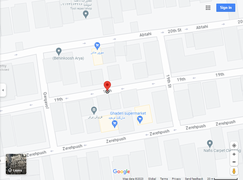Incorporating NK Cells in a Three-Dimensional Organotypic Culture System for Human Skin Stem Cells: Modeling Skin Diseases and I
Incorporating NK Cells in a Three-Dimensional Organotypic Culture System for Human Skin Stem Cells: Modeling Skin Diseases and Immune Cell Interplay
Abstract Natural killer (NK) cells are a part of a sophisticated immune system that is necessary for the skin because it is a crucial organ that is continually exposed to environmental influences. Recent studies have shown that NK cell incorporation into three-dimensional (3D) organotypic culture systems for human skin stem cells provides a physiologically relevant environment to study the interactions between immune cells and skin cells, making it a powerful tool for simulating skin diseases and researching these interactions. It has been shown that adding NK cells to 3D organotypic culture systems can improve keratinocyte differentiation and control inflammation in a variety of skin conditions, including psoriasis. In order to increase our knowledge of skin diseases and immune cell interactions, this work intends to propose an optimum approach for adding NK cells to a 3D organotypic culturing system for human skin stem cells. By better comprehending these relationships, researchers hope to develop novel tre

Abstract
Natural killer (NK) cells are a part of a sophisticated immune system that is necessary for the skin because it is a crucial organ that is continually exposed to environmental influences. Recent studies have shown that NK cell incorporation into three-dimensional (3D) organotypic culture systems for human skin stem cells provides a physiologically relevant environment to study the interactions between immune cells and skin cells, making it a powerful tool for simulating skin diseases and researching these interactions. It has been shown that adding NK cells to 3D organotypic culture systems can improve keratinocyte differentiation and control inflammation in a variety of skin conditions, including psoriasis. In order to increase our knowledge of skin diseases and immune cell interactions, this work intends to propose an optimum approach for adding NK cells to a 3D organotypic culturing system for human skin stem cells. By better comprehending these relationships, researchers hope to develop novel treatments for skin diseases that are more effective and cause fewer side effects than current treatments. To completely understand the mechanisms underlying these interactions and to create new treatments for skin diseases, more research is required. In conclusion, NK cell integration into 3D organotypic culture systems offers a potent tool to investigate immune cell interactions with skin cells in a physiologically appropriate setting, which may result in major improvements in the treatment of skin diseases.




ارسال نظر